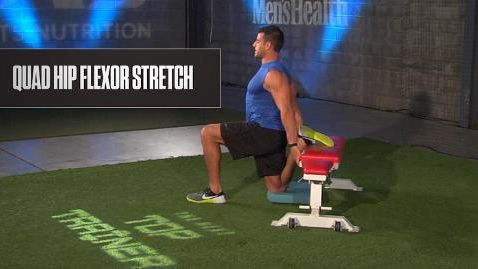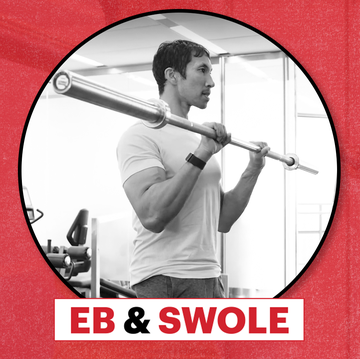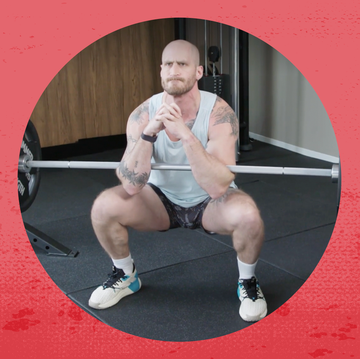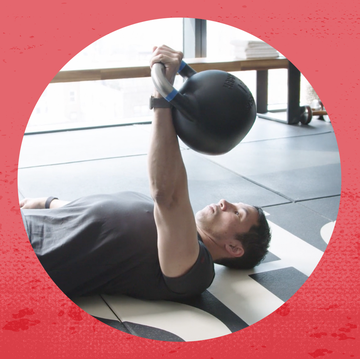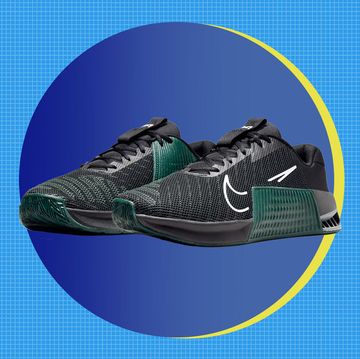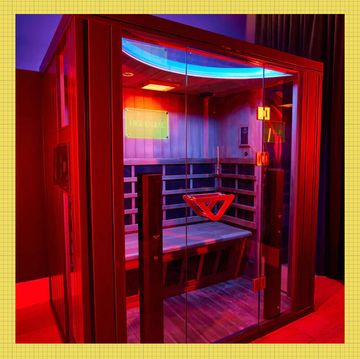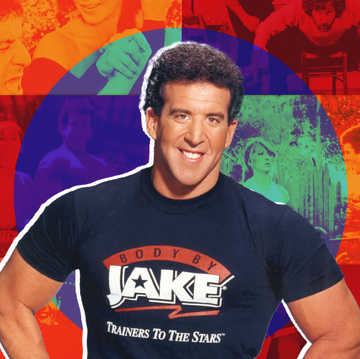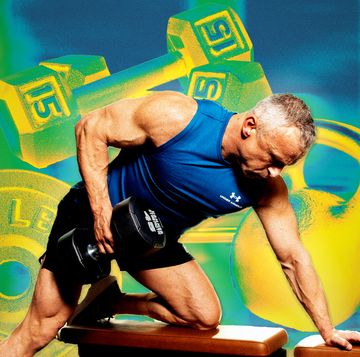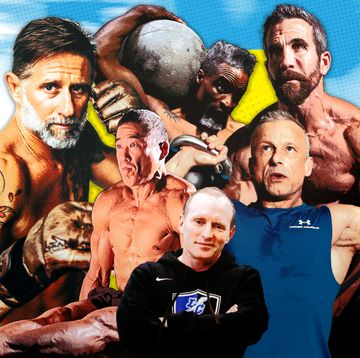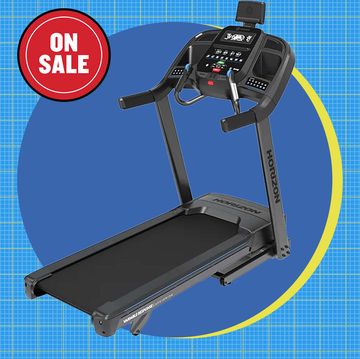Stand up. Now grab your butt. Is it tight? If your glutes aren’t slightly contracted, you’re standing all wrong.
And that could be why your squat numbers are stagnant, why your low back hurts, and why just can’t seem to get into correct form on your favorite exercises, says Doug Kechijian, P.T., coach at Peak Performance in New York City, New York.
Most men stand lazily, with their shoulders slumped, their weight shifted into their right hip (all people are predisposed to favor their right side), and their feet flared out, says Kechijian. In fact, you’re probably standing like this right now.
“When you frequently stand that way, your body almost gets ‘stuck’ there,” Kechijian explains. “Your hips always return to that shifted position and your shoulders always slump.” It becomes your “home base."
So when you hit the gym, you’re in trouble. Your compromised stance can cause your hips and shoulders to become tight over time. And that stiffness leads to immobility, making it impossible to use correct form in many exercises.
Lift with bad form and you not only get a smaller return on each rep—which means less strength gains and less fat loss—but you also increase your risk of injury. For instance, if your hips can’t move in their full range of motion, you won’t be able to get into a low squat position.
To compensate, your torso must tilt forward, which causes the bulk of the weight to shift into your low back.
This form adjustment might seem minor, but it can trigger serious, sidelining injuries like disc bulges. (Correct posture can help prevent back pain—and so can these 4 core exercises in The Fit Man’s Back-Saving Workout.)
The Right Way to Stand
The “ideal” way to stand is with your feet forward instead of flared out (actively try to "screw" your feet into the ground), glutes and abs slightly contracted, and shoulders externally rotated (to find this position, place your palms on your pecs), according to Kelly Starrett, P.T., creator of MobilityWOD.com and author of Becoming a Supple Leopard. Try to maintain this position for as long as possible whenever you are on your feet.
When you inevitably tire—and you will, it’s hard to keep your butt and abs like that all day—don’t return to your regular, old standing position, says Starrett. Instead, prop your foot on a low box or bench in front of you while keeping your shoulders externally rotated and your glutes activated, he says. The more you look like Captain Morgan, the better. Switch feet whenever you feel the need to.
Related: 4 Daily Exercises Every Navy SEAL (and Every Fit Guy) Should Do
Another option: “Stand with your right foot slightly in front of your left. That helps you shift your weight to your left leg and into your left hip,” says Kechijian. “That will help to offset your right-side bias.”
But don’t get ‘stuck’ here, either. You want to divide your time between your left and right hip. Switch sides about every 10 minutes.
In order to prevent your shoulders from rounding, readjust them every so often, too. Practice the external shoulder rotation cue: Place your palms on your pecs, without "shrugging" your shoulders.
Freeze. Keeping your shoulders in this exact spot, drop your arms to your sides. This is where your shoulders should be every time you stand.
(For more simple ways to improve your body, read the Better Man Project. It’s the new book from the Editor in Chief of Men’s Health, and it’s jam-packed with more than 2,000 tips and life hacks to help you improve your health, fitness, career, and sex life.)
The biggest point you want to remember: Never get too comfortable, say Kechijian and Starrett. You want to move often and check in on your posture whenever you stand. Work toward fostering a new “home base” so you can reach new levels of strength and muscle.
And whatever you do, don’t sit back down.

